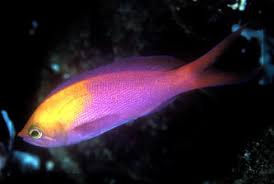Dragons in Chinese Ceramic and Porcelain Artworks

Dragons hold a profound place in Chinese culture and mythology, often symbolizing power, strength, and good fortune. These mythical creatures have appeared in Chinese art for centuries, especially in ceramic and porcelain works, where their image has been immortalized in intricate and mesmerizing forms. In this article, we explore the significance of dragons in Chinese ceramic and porcelain art, examining their symbolic meanings, depiction styles, and how these majestic creatures have been woven into the fabric of China’s artistic heritage.
The Symbolism of the Dragon in Chinese Culture
In Chinese culture, the dragon is not a fearsome monster but a benevolent and auspicious figure. It is traditionally associated with the emperor, representing imperial authority and power. In fact, the dragon was considered the emblem of the emperor, and only the emperor was allowed to wear dragon robes. Beyond royalty, the dragon also symbolizes prosperity, fertility, and good luck, playing a significant role in Chinese celebrations and rituals.
The dragon is often linked to water, such as rivers, seas, and rain, which are crucial for agriculture in China. This association makes the dragon a symbol of nature’s power and a protector of the land. These auspicious qualities of the dragon make it a favored motif in art, especially in the delicate and intricate world of ceramics and porcelain.
The Role of Dragons in Chinese Ceramic Art
Ceramics have been an integral part of Chinese culture for thousands of years, with dragons frequently appearing on various types of pottery, from ancient tomb relics to Ming and Qing dynasty porcelain. Early examples of dragon imagery in ceramics can be found in the Han dynasty (206 BC–220 AD), where they were often embossed or painted onto tomb artifacts, symbolizing protection for the deceased in the afterlife.
During the Tang Dynasty (618–907 AD), Chinese potters began to incorporate more dynamic depictions of dragons into their works, with the creature often depicted as soaring through the clouds or swimming in the sea. These dragons were typically shown in a more naturalistic style, emphasizing movement and the flow of energy.
One of the most significant periods for dragon-themed ceramics was during the Ming Dynasty (1368–1644 AD). The Ming porcelain dragons are renowned for their detailed and stylized appearance, often portrayed with five claws, which were reserved for imperial dragons. The designs featured on blue-and-white porcelain plates, vases, and other objects were intricate and highly symbolic, often associated with imperial power and the protection of the state.
Dragons in Qing Dynasty Porcelain
The Qing Dynasty (1644–1912 AD) saw the refinement of dragon motifs on porcelain, particularly on pieces made for the imperial court. Qing porcelain dragons were often depicted in a more stylized and elegant manner, with an emphasis on the flowing contours of the body and the vibrant colors of the enamel. The dragons on Qing porcelain were often shown coiled in dynamic poses, creating a sense of motion and energy. The dragons in these works were typically set against swirling clouds or waves, emphasizing their connection to both the heavens and the earth.
One of the most famous types of Qing porcelain featuring dragons is the “dragon and phoenix” design, which symbolized the union of imperial authority (dragon) and the empress (phoenix). This design often appeared on ceremonial items, such as imperial wedding gifts, further solidifying the dragon’s association with power, wealth, and imperial prestige.
The Artistic Techniques Behind Dragon Porcelain
The portrayal of dragons in Chinese porcelain required immense technical skill and creativity. Artists used various techniques to bring the dragons to life, including hand-painting, relief molding, and underglaze painting. The finest porcelain artists mastered the art of creating delicate and detailed dragon images that could withstand centuries of wear and time.
One notable technique used for creating dragons on porcelain is the use of cobalt blue underglaze, particularly in the famous blue-and-white porcelain works from the Ming and Qing Dynasties. This technique involved painting the dragon in intricate detail using cobalt blue pigment, which was then fired at a high temperature to create a beautiful, permanent design. The contrast between the deep blue and the white porcelain made these works highly sought after, both domestically and internationally.
Dragon Imagery in Contemporary Chinese Ceramics
While the dragon is deeply rooted in traditional Chinese ceramics, it continues to inspire contemporary artists. Modern ceramicists often reinterpret the traditional dragon motifs, blending classical designs with new techniques and influences from global art trends. Contemporary Chinese porcelain artists may use dragons to explore themes of cultural identity, power, and heritage, while also experimenting with new forms and expressions.
Conclusion
Dragons in Chinese ceramic and porcelain art represent far more than just a mythical creature; they are a symbol of China’s imperial past, cultural values, and artistic legacy. From the ancient tomb artifacts of the Han dynasty to the intricate blue-and-white porcelain of the Ming and Qing dynasties, dragons have been integral to China’s artistic traditions. Today, the dragon continues to inspire contemporary ceramic artists, ensuring that this powerful symbol remains a significant part of Chinese culture and art.

